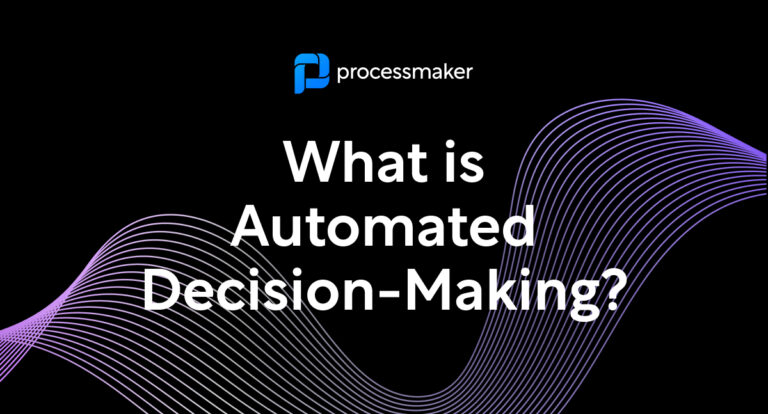Globally, almost 300 million students are enrolled in the higher education system. Colleges and universities do more than deliver a standalone product to these millions of customers. They’re often responsible for a veritable Maslow pyramid for each and every student, including housing, food, health programs, public safety, and general quality of life.
Without the right systems in place, the billions of data points and internal processes that underpin these systems can swiftly spin out of control. So how are top-performing higher ed institutions managing the student lifecycle? Through workflow automation: a magic wand for getting the job done with ease and efficiency.
How colleges and universities are boosting efficiency through workflow automation
A recent study revealed that one-quarter of faculty waste four or more hours per day wrestling with tasks like manual data entry. With the right automated systems in place, education teams can reduce the hours spent toiling with paperwork and better commit that time to students themselves. In fact, Ernst & Young revealed that in one case, automation saved a university 1,330 hours of manual effort per year by reducing 40 productivity-guzzling tasks down to one. Workflow automation software is a saving grace for colleges and universities struggling to streamline their processes. Here are ten ways they’re using it.
Student performance monitoring
Why spend the same administrative time evaluating a student with a 4.0 average and perfect attendance as you would on one with a gradually declining GPA? Approximately 1,400 colleges and universities in the U.S. use workflow automation to track student behaviors and predict which students will require closer attention.
Programs can churn through masses of data and identify outliers at risk of abandoning their collegiate journey. Systems can automatically flag students with slumping GPAs or those who tend to pay their tuition late. Some dive even deeper and identify nuanced trends like students with wall-to-wall classes on Thursdays are more likely to abandon ship.
Attendance tracking
Success advisors can use attendance tracking to identify students at risk of dropping out and enact preventative measures to get things back on track. In one presentation, a Georgia State faculty member estimated they’d find a handful of students likely to drop out over the next year. Using automated intelligence, they found 800.
Proactive alerts automatically inform staff of consistent tardiness or absence—boosting student retention and graduation rates amongst these at-risk students. You don’t need to wait to compile a report—by that time, students will have missed even more hours of coursework. With real-time visibility into student activity, you can send out automated reminders to missing students while the class is still in session.
Enrollment document validation
A student logs in to register for their next semester of classes, only to find that they’re barred from doing so. To find out why, they need to place several phone calls and wait in line outside of a few offices—only to discover that it was all due to one missing form.
There are dozens of documents required to approve a student for enrollment:
- Transcripts
- Advisor Approval
- Plan of Study
- Completion of mandatory student life training
- Immunization records
- Tuition Receipt
Instead of assigning a staff member to manually compile and check the progress of each of these forms, a workflow automation platform can aggregate data from multiple departments. Then, bots can skim through and flag students still missing key documents. Software distributes emails or text messages reminding academics of the exact form required to complete their enrollment package.
When everything can be done in the click of a button, as CUNY School of Law can attest, your team has more time to nurture student relationships.
Eligibility analysis
Eligibility analysis is just another checklist. Take advantage of the power of automation: shift the responsibility for completing these items from a human over to a computer. Tulsa Community College was hamstrung by the manual tasks behind their graduation approvals until they opted to digitize the process from start to finish.
Now, forms are pre-populated with the correct information and automatically passed up the ladder to collect e-signatures from the right departments. Systems scan the application for any missing data, and remind the student or other party to tie up the loose ends.
Major change requests
Major change requests are another area ripe for automation. For a student to change their major, universities review a buffet of data points like grades earned in previous courses or completion of prerequisites. Manually weighing these requirements for each student can take weeks—but an automated system can skim through to approve or deny requests in mere seconds. Once you’ve established the rules, technology like robotic process automation can take over and pass eligible students up the approval rungs for final sign-off or deny those that don’t meet the right conditions.
Add/drop classes
A self-service portal can enable students to add/drop classes without leaving the comfort of their dorm. You’ll set the rules and requirements for adding or dropping a specific course, and your online form will enforce them. Say a student hasn’t passed the proper requisites to add a certain course, or it conflicts with another class on their schedule. You’ll teach systems how to evaluate incoming requests to make swift decisions without disrupting staffers.
Tuition assistance review
Workflow automation tools can help you establish a dashboard of student information like GPA, SAT scores, and expected family financial contribution to help staffers better identify prospects for scholarships and other tuition assistance programs. Infusing this critical step with the right data points can be a boon to enrollment. According to one study shared by Brookings, by better identifying financial aid prospects, universities can enjoy a 10% increase in enrollment.
Compliance
Cutting back on unnecessarily repetitive tasks doesn’t mean cutting regulatory corners. Workflow automation bolsters your compliance processes by ensuring your systems and staff members follow a mandatory checklist of steps to complete essential tasks. Software supplants the need for the physical stroll to the filing cabinet and automatically stores vital documents in the cloud. You’ll avoid the risks of human error and establish a clear audit trail.
Non-routine student data revisions
Occasionally, students need to update information on file like address, contact information, or a change in advisor. Without automated processes in place, the procedure looks something like this. A student must walk down to the registrar’s office and fill out a sheet of paper. The form is walked over to an administrator’s office, who performs hours of typist’s work each week to update systems. Eventually, the form is processed, lost in the shuffle, or keyed incorrectly.
With a solid automated system in place, you can set up a self-service system for students to update their own information through an app or website. By doing so, you eliminate time-consuming manual hand-offs for your team and also cultivate a more enjoyable student experience.
Planning and scheduling faculty, board, and student meetings
Say goodbye to the time-draining task of coordinating a meeting between several different parties. Automated workflows can “read” campus schedules and automatically black out days and times filled by classes or campus activities. These “digital administrators” can find open time slots in mere seconds, giving your team 50–75% more time to firm up the itinerary and set the stage for a more productive event—instead of drowning in scheduling back-and-forths.
Of the 55% of university leaders who labeled their school as a “digital performer,” only a third believed their data was actually usable in supporting key strategic decisions. Universities and colleges do not lack data—they need the tools to make better use of it. Using workflow automation, universities can finally gain control of their data and turn it into the actionable insights that drive ROI, boost productivity amongst faculty, and most importantly—create a stunning student journey.





